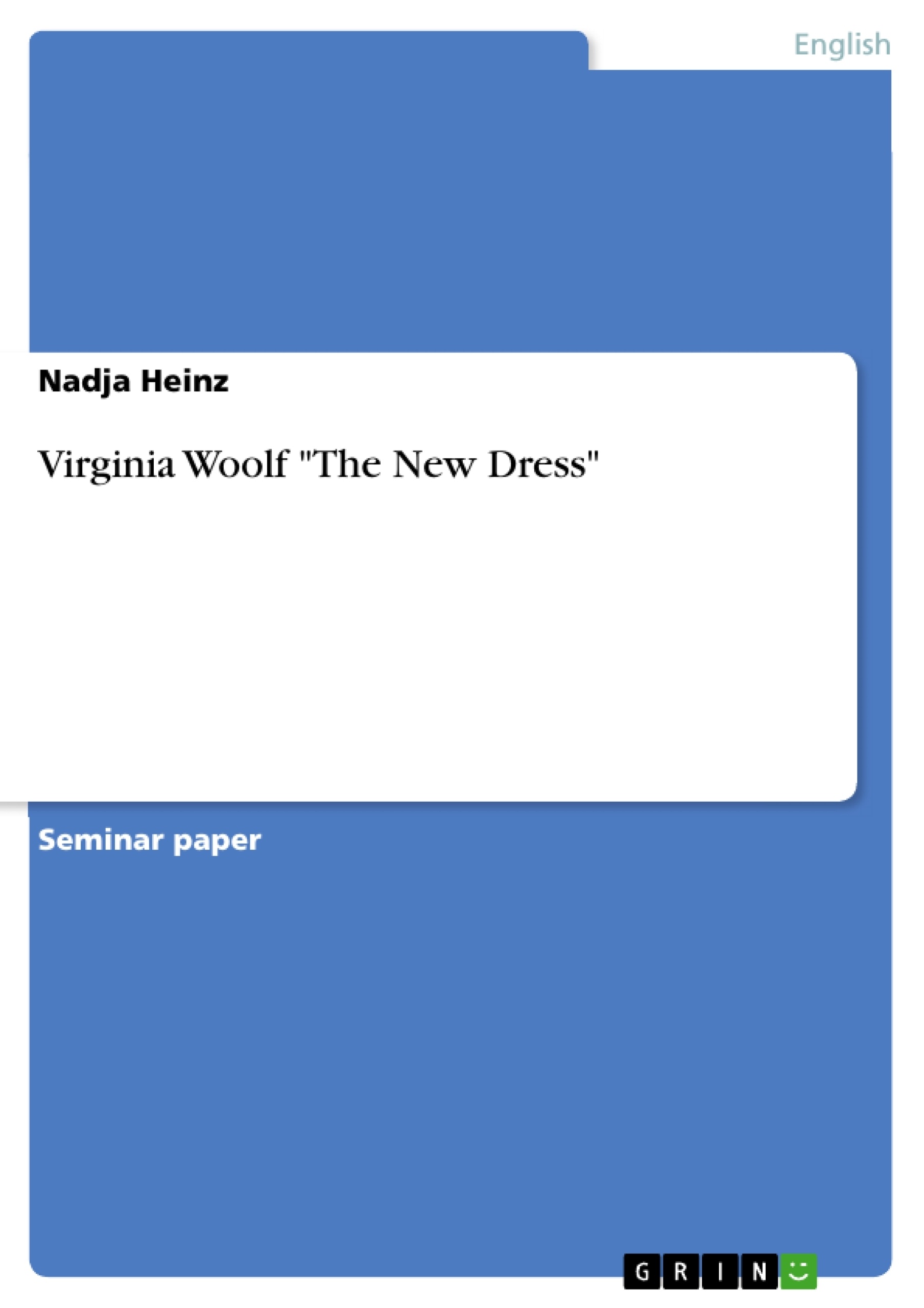1. Introduction
Virginia Woolf wrote the short story “The New Dress” in 1924. It was made in preparation of her novel “Mrs. Dalloway”. The same Mrs. Dalloway is the one giving the party in “The New Dress”. It is a story about the feelings of a woman towards herself and her reaction to the behaviours of others when they meet her. The protagonist is Mable Waring, a woman at the age of 40, who is invited to a party at a friend´s house. Because of this occasion Mable´s dressmaker makes her a new dress, which Mabel has found in an old fashion book of her mother. She likes that yellow dress very much until she arrives at the party where she can see and feel how the other guests look at her. She starts to feel uncomfortable and searches for confirmation wherever she can. But Mabel does not get the confirmation she is looking for. During her stay at the party she has several flashbacks which remind her of the moments at the dressmaker Miss Milan and of her past. These moments make her happy but also aware of the situation she is in at the party which makes her sad again. At these occasions she always compares herself to a fly trying to get over the edge of a saucer. At the end of the story she thinks about changing her life and leaves the party with this new feeling.
It is a bit difficult to understand all aspects of this short story completely. The reader has to read the story more than one time to really comprehend the strong feelings which are going on in the protagonists psyche. The stream-ofconsciousness technique which Virginia Woolf is famous for, makes the story more interesting and shows the reader the inside of Mabel. She also uses quite a few images which should be understood by the reader. The new dress and thus women’s consciousness of fashion have to be considered. The protagonist Mabel is not a very strong character and does not have much selfconfidence, that is why she can be easily influenced by others. She uses flashbacks to escape the reality but these happy feelings are only temporary. At the end nothing has really changed for Mabel and she will always stay the way she is. [...]
Table of Contents
- Introduction
- The Author
- Characteristics of "The New Dress"
- Plot Structure
- Setting
- Character Analysis
- Language
- Conclusion
Objectives and Key Themes
The primary objective of this analysis is to explore the thematic and stylistic complexities of Virginia Woolf's short story "The New Dress." It aims to provide a nuanced understanding of the story's narrative structure, character development, and use of language, particularly the stream-of-consciousness technique.
- The protagonist's struggle with self-perception and her feelings of inadequacy.
- The influence of social expectations and perceptions on individual identity.
- The power of memory and the relationship between past and present experiences.
- The use of stream-of-consciousness as a narrative technique to explore inner thoughts and feelings.
- The importance of fashion and its connection to female identity and social status.
Chapter Summaries
- Introduction: This section introduces the short story "The New Dress," highlighting its context within Woolf's broader literary output, particularly in relation to her novel "Mrs. Dalloway." It also briefly outlines the protagonist, Mabel Waring, and her journey through the story.
- The Author: This chapter provides a concise biography of Virginia Woolf, emphasizing her role in shaping the modern psychological novel and her innovative use of stream-of-consciousness. It also touches on her personal relationship with fashion and the influence of her social circle, particularly Dorothy Todd, on her writing.
- Characteristics of "The New Dress": This section delves into the story's structure, setting, character analysis, and language. It focuses on how Woolf uses these elements to explore the protagonist's inner turmoil and her complex relationship with herself and the world around her.
Keywords
The key themes and concepts explored in this analysis include stream-of-consciousness, self-perception, social expectations, memory, identity, female consciousness, fashion, and the relationship between inner and outer realities.
- Quote paper
- Nadja Heinz (Author), 2003, Virginia Woolf "The New Dress", Munich, GRIN Verlag, https://www.grin.com/document/53080




